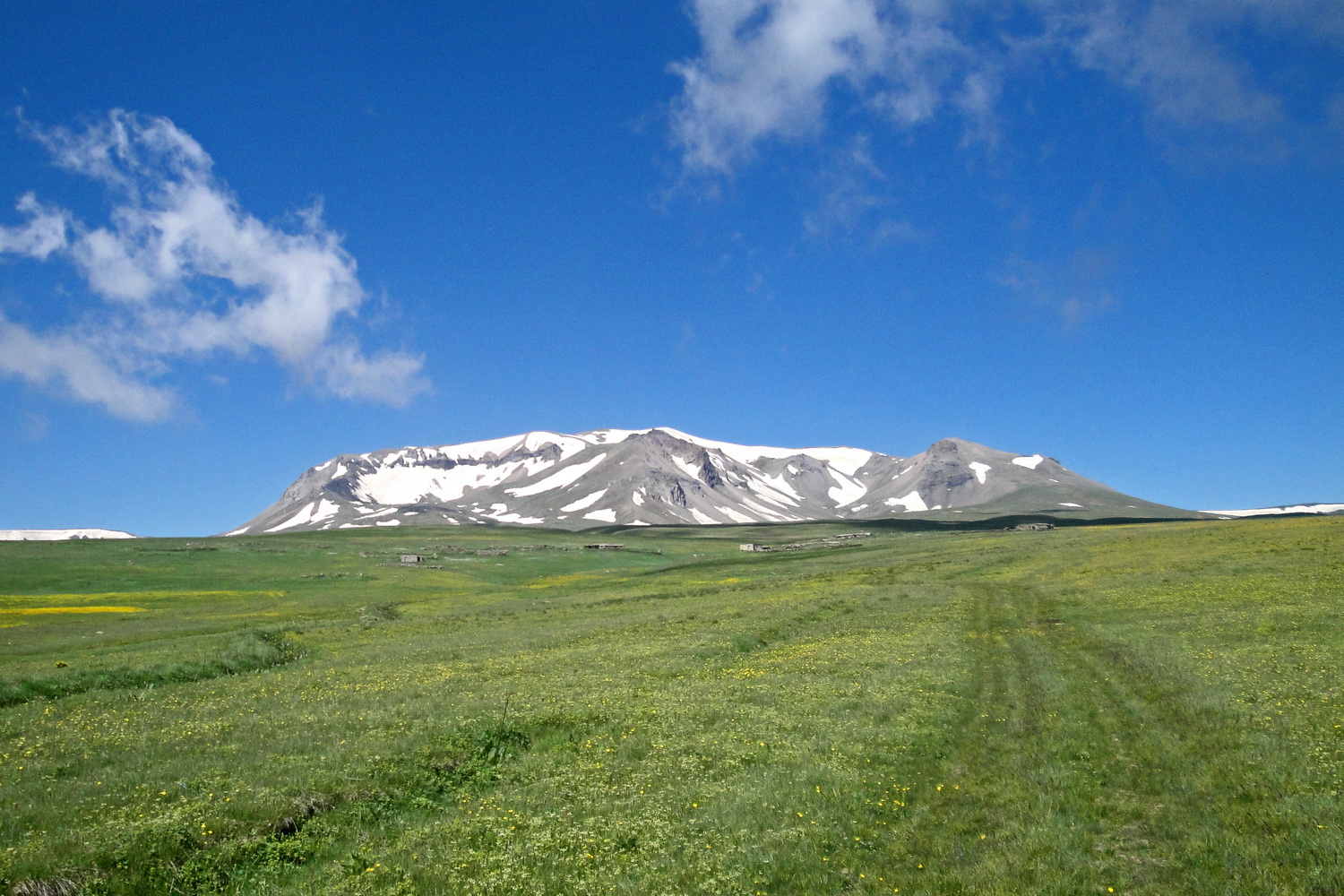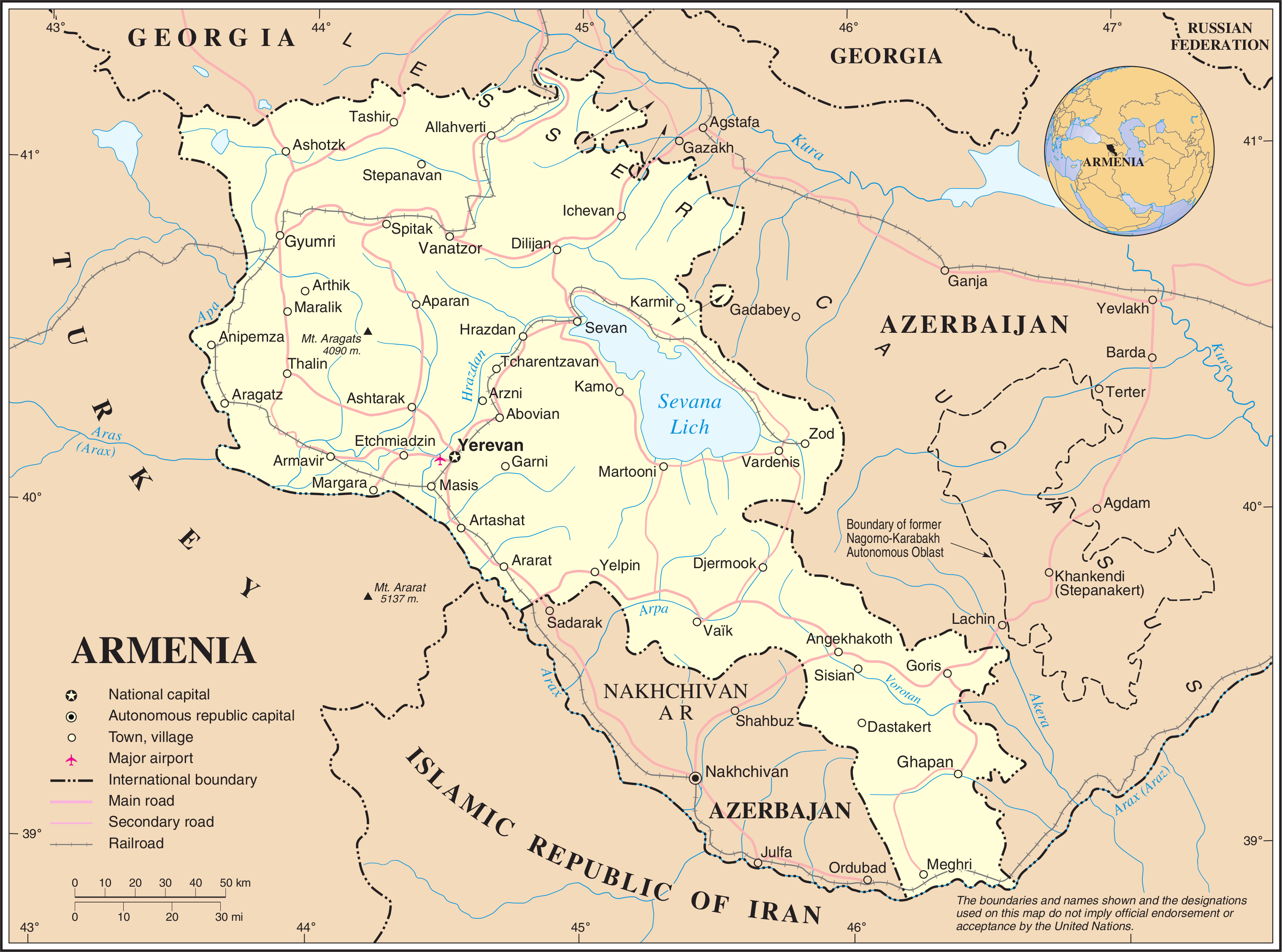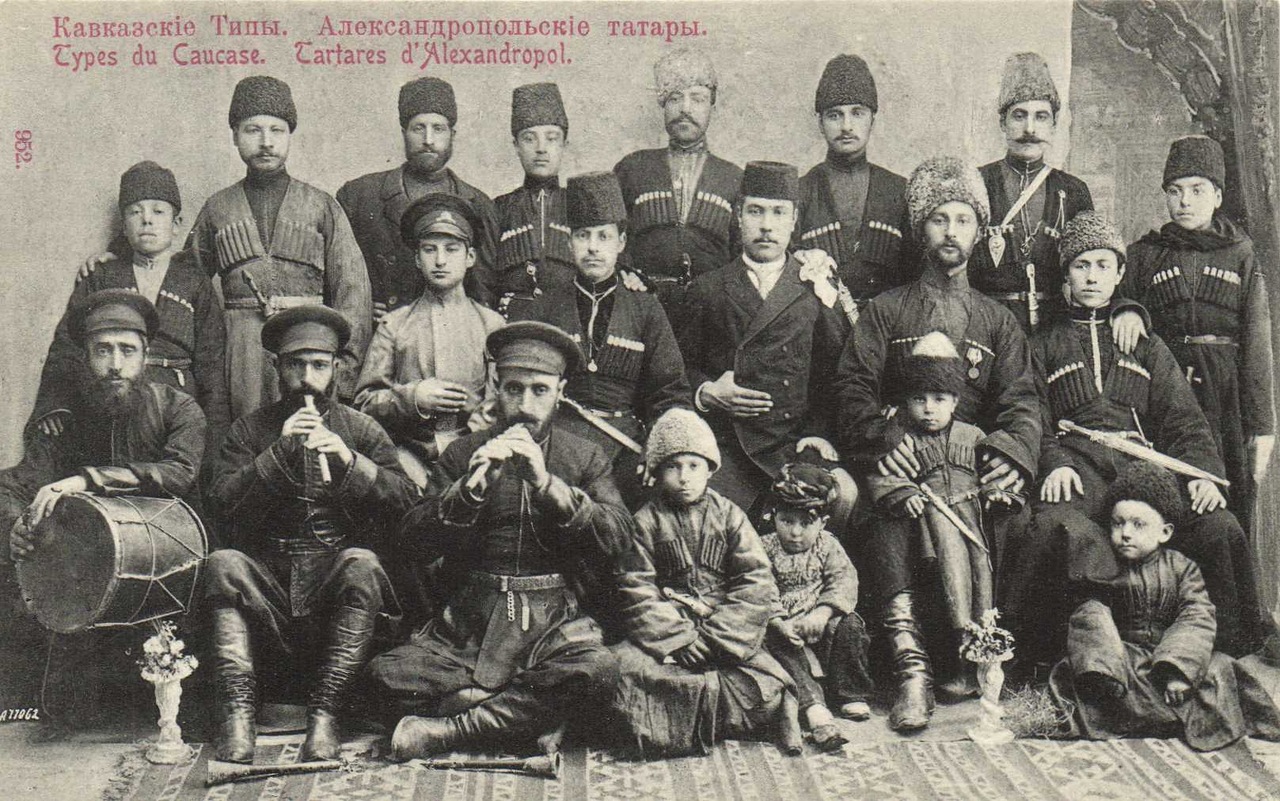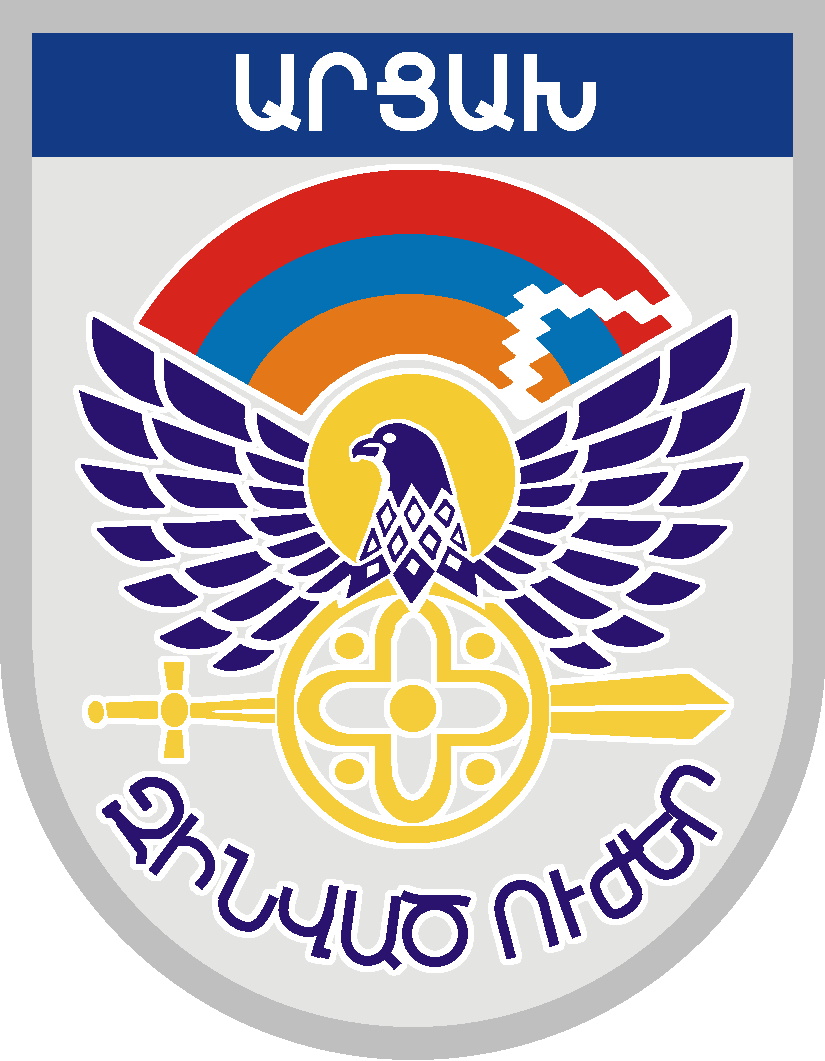|
Lusarat
Lusarat ( hy, Լուսառատ; az, Şıxlar, anglicized: ''Shykhlar'') is a village in the Ararat Province of Armenia. It is situated adjacent to the Armenia–Turkey border. Azerbaijanis lived with the Armenians in the village before the exodus of Azerbaijanis from Armenia after the outbreak of the Nagorno-Karabakh conflict. Monuments In the village is a statue of an early 20th-century Armenian fedayi; armed defensive militia units that voluntarily defended the territory from outside forces. The Khor Virap Khor Virap ( hy, Խոր Վիրապ, lit=deep dungeon) is an Armenian monastery located in the Ararat Plain in Armenia, near the border with Turkey, about south of Artashat, Ararat Province, within the territory of ancient Artaxata. The monaster ... Monastery is also located close to the village. Gallery Image:Khor Virap Monastery.jpg, Lusarat seen in the background of Khor Virap Monastery. References External links * World Gazeteer: Armenia– World ... [...More Info...] [...Related Items...] OR: [Wikipedia] [Google] [Baidu] |
Khor Virap
Khor Virap ( hy, Խոր Վիրապ, lit=deep dungeon) is an Armenian monastery located in the Ararat Plain in Armenia, near the border with Turkey, about south of Artashat, Ararat Province, within the territory of ancient Artaxata. The monastery was host to a theological seminary and was the residence of Armenian Catholicos. Khor Virap's notability as a monastery and pilgrimage site is attributed to the fact that Gregory the Illuminator was initially imprisoned here for 13 years by King Tiridates III of Armenia. Saint Gregory subsequently became the king's religious mentor, and they led the proselytizing activity in the country. In the year 301, Armenia was the first country in the world to be declared a Christian nation.Noble, pp. 176– A chapel was initially built in 642 at the site of Khor Virap by Nerses III the Builder as a mark of veneration to Saint Gregory. Over the centuries, it was repeatedly rebuilt. In 1662, the larger chapel known as the "St. Astvatsatsin" (Holy M ... [...More Info...] [...Related Items...] OR: [Wikipedia] [Google] [Baidu] |
Ararat Province
Ararat ( hy, Արարատ, ), is a province ('' marz'') of Armenia. Its capital and largest city is the town of Artashat. The province is named after the biblical Mount Ararat. It is bordered by Turkey from the west and Azerbaijan's Nakhchivan Autonomous Republic from the south. It surrounds the Karki exclave of Nakhichevan which has been controlled by Armenia since its capture in May 1992 during the First Nagorno-Karabakh War. Domestically, Ararat is bordered by Armavir Province from the northwest, Kotayk Province from the north, Gegharkunik Province from the east, Vayots Dzor Province from the southeast and the city of Yerevan from the north. Two former capitals of Armenia are located in the modern-day Ararat Province, Artaxata and Dvin. It is also home to the Khor Virap monastery, significant as the place of Gregory the Illuminator's 13-year imprisonment and the closest point to Mount Ararat within Armenian borders. Etymology Ararat Province is named after the historic A ... [...More Info...] [...Related Items...] OR: [Wikipedia] [Google] [Baidu] |
Armenia–Turkey Border
The Armenia–Turkey border ( hy, Հայաստան–Թուրքիա սահման, translit=Hayastan–T’urk’ia sahman, tr, Ermenistan–Türkiye sınırı) is 311 km (193 m) in length and runs from the tripoint with Georgia (country), Georgia in the north to the tripoint with Azerbaijan in the south. The land border has been closed since April 3rd, 1993. Description The border starts in the north at the tripoint with Georgia just west of Lake Arpi and proceeds southwards via series of irregular lines through the Armenian Highlands. Upon reaching the Akhurian River it follows the river south down to the confluence with the Aras river, and then follows the Aras as it flows east and then south-east, down to the tripoint with Azerbaijan's Nakhchivan Autonomous Republic. The ancient ruins of Ani lie directly adjacent to the border on the Turkish side. History During the 19th century, the Caucasus region was contested between the declining Ottoman Empire, Qajar Iran, Persia ... [...More Info...] [...Related Items...] OR: [Wikipedia] [Google] [Baidu] |
Armenia
Armenia (), , group=pron officially the Republic of Armenia,, is a landlocked country in the Armenian Highlands of Western Asia.The UNbr>classification of world regions places Armenia in Western Asia; the CIA World Factbook , , and ''Oxford Reference Online'' also place Armenia in Asia. It is a part of the Caucasus region; and is bordered by Turkey to the west, Georgia to the north, the Lachin corridor (under a Russian peacekeeping force) and Azerbaijan to the east, and Iran and the Azerbaijani exclave of Nakhchivan to the south. Yerevan is the capital, largest city and the financial center. Armenia is a unitary, multi-party, democratic nation-state with an ancient cultural heritage. The first Armenian state of Urartu was established in 860 BC, and by the 6th century BC it was replaced by the Satrapy of Armenia. The Kingdom of Armenia reached its height under Tigranes the Great in the 1st century BC and in the year 301 became the first state in the world to adopt ... [...More Info...] [...Related Items...] OR: [Wikipedia] [Google] [Baidu] |
Administrative Divisions Of Armenia
Administration may refer to: Management of organizations * Management, the act of directing people towards accomplishing a goal ** Administrative Assistant, traditionally known as a Secretary, or also known as an administrative officer, administrative support specialist, or management assistant is a person whose work consists of supporting management, including executives, using a variety of project management, communication, or organizational skills, while in some cases, in addition, may require specialized knowledge acquired through higher education. ** Administration (government), management in or of government *** Administrative division ** Academic administration, a branch of an academic institution responsible for the maintenance and supervision of the institution ** Arts administration, a field that concerns business operations around an art organization ** Business administration, the performance or management of business operations *** Bachelor of Business Administratio ... [...More Info...] [...Related Items...] OR: [Wikipedia] [Google] [Baidu] |
Anglicisation
Anglicisation is the process by which a place or person becomes influenced by English culture or British culture, or a process of cultural and/or linguistic change in which something non-English becomes English. It can also refer to the influence of English culture and business on other countries outside England or the United Kingdom, including their media, cuisine, popular culture, technology, business practices, laws, or political systems. Linguistic anglicisation is the practice of modifying foreign words, names, and phrases to make them easier to spell, pronounce or understand in English. The term commonly refers to the respelling of foreign words, often to a more drastic degree than that implied in, for example, romanisation. One instance is the word "dandelion", modified from the French ''dent-de-lion'' ("lion's tooth", a reference to the plant's sharply indented leaves). The term can also refer to phonological adaptation without spelling change: ''spaghetti'', for example ... [...More Info...] [...Related Items...] OR: [Wikipedia] [Google] [Baidu] |
Azerbaijanis In Armenia
Azerbaijanis in Armenia ( az, Ermənistan azərbaycanlıları or Qərbi azərbaycanlılar, lit=Western Azerbaijanis) numbered 29 people according to the 2001 census of Armenia. Although they have previously been the biggest minority in the country according to 1831–1989 censuses, they are virtually non-existent since 1988–1991 when most fled or were forced out of the country as a result of the tensions of the First Nagorno-Karabakh War to neighboring Azerbaijan. The UNHCR estimates that the current population of Azerbaijanis in Armenia to be somewhere between 30 and a few hundred people,Second Report Submitted by Armenia Pursuant to Article 25, Paragraph 1 of the Framework Convention for the Protectio ... [...More Info...] [...Related Items...] OR: [Wikipedia] [Google] [Baidu] |
Nagorno-Karabakh Conflict
The Nagorno-Karabakh conflict is an ethnic and territorial conflict between Armenia and Azerbaijan over the disputed region of Nagorno-Karabakh, inhabited mostly by ethnic Armenians, and seven surrounding districts, inhabited mostly by Azerbaijanis until their expulsion during the First Nagorno-Karabakh War. Some of these territories are ''de facto'' controlled, and some are claimed by the breakaway Republic of Artsakh although they have been internationally recognized as part of Azerbaijan. The conflict has its origins in the early 20th century, but the present conflict began in 1988, when the Karabakh Armenians demanded transferring Karabakh from Soviet Azerbaijan to Soviet Armenia. The conflict escalated into a full-scale war in the early 1990s which later transformed into a low-intensity conflict until four-day escalation in April 2016 and then into another full-scale war in 2020. A ceasefire signed in 1994 in Bishkek was followed by two decades of relative stability ... [...More Info...] [...Related Items...] OR: [Wikipedia] [Google] [Baidu] |
European Stability Initiative
The European Stability Initiative (ESI) is a think tank focusing on South East Europe and enlargement of the European Union. It has offices in Berlin, Brussels and Istanbul. History The ESI was founded in June 1999 in Sarajevo. Its founders, multi-national practitioners and analysts, were members of international organisations like the OSCE, the United Nations or the World Bank.Einer, der auszog, Europa zu verstehen (German). ''''. Retrieved January 2017 It was founded as a research network to advance the integration of the into the |
Armenian Fedayi
''Fedayi'' (Western hy, Ֆէտայի ''Fedayi''; Eastern hy, Ֆիդայի ''Fidayi''), also known as the Armenian irregular units or Armenian militia, were Armenian civilians who voluntarily left their families to form self-defense units and irregular armed bands in reaction to the mass murder of Armenians and the pillage of Armenian villages by criminals, Kurdish gangs, Turkish forces, and Hamidian guards during the reign of Ottoman Sultan Abdul Hamid II in late 19th and early 20th centuries, known as the Hamidian massacres. Their ultimate goal was always to gain Armenian autonomy ( Armenakans) or independence (Dashnaks, Hunchaks) depending on their ideology and the degree of oppression visited on Armenians. Some of the key Fedayi figures also participated in the Iranian Constitutional Revolution that commenced during the same period, upon agreement of the ARF leaders. The Armenian term ''fedayi'' is ultimately derived from Arabic fedayeen: ''fidā'īyūn'', literally me ... [...More Info...] [...Related Items...] OR: [Wikipedia] [Google] [Baidu] |





.png)